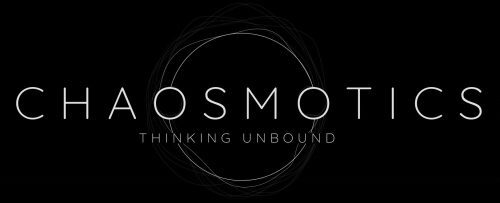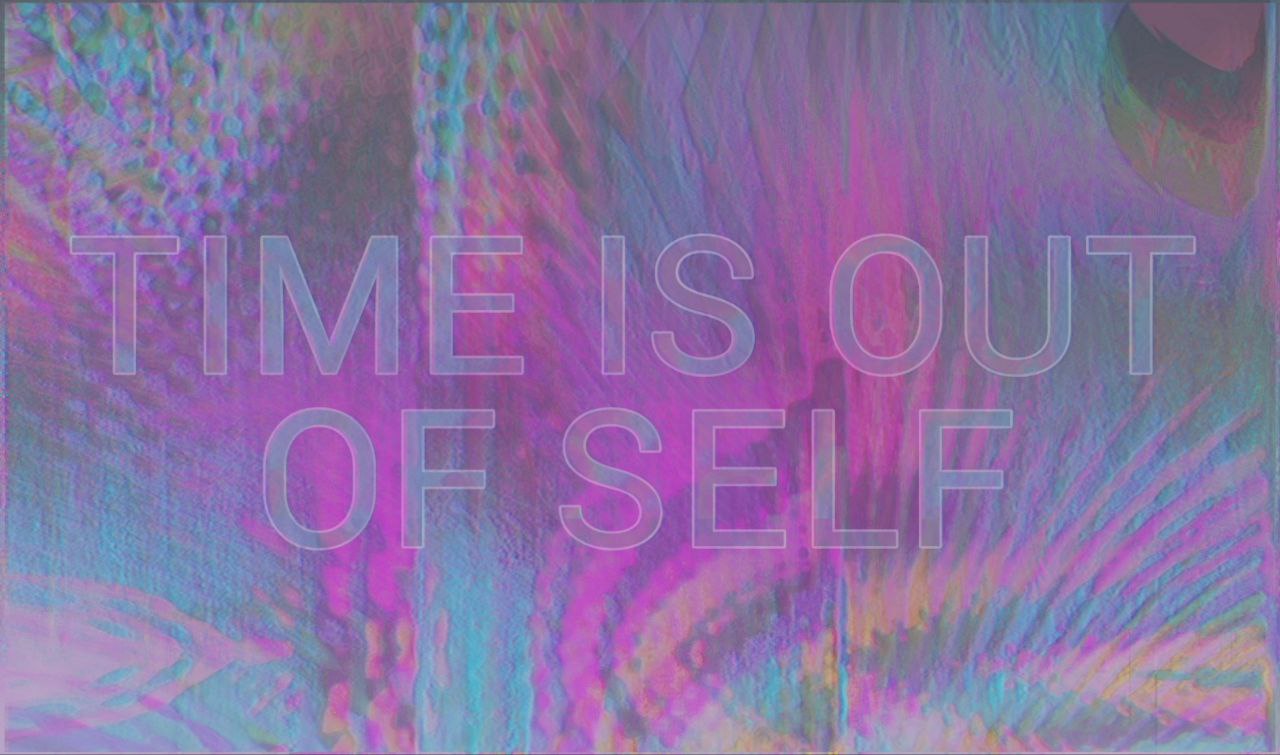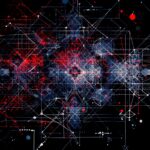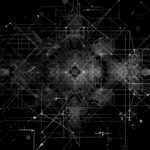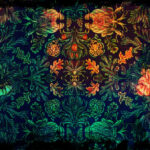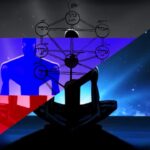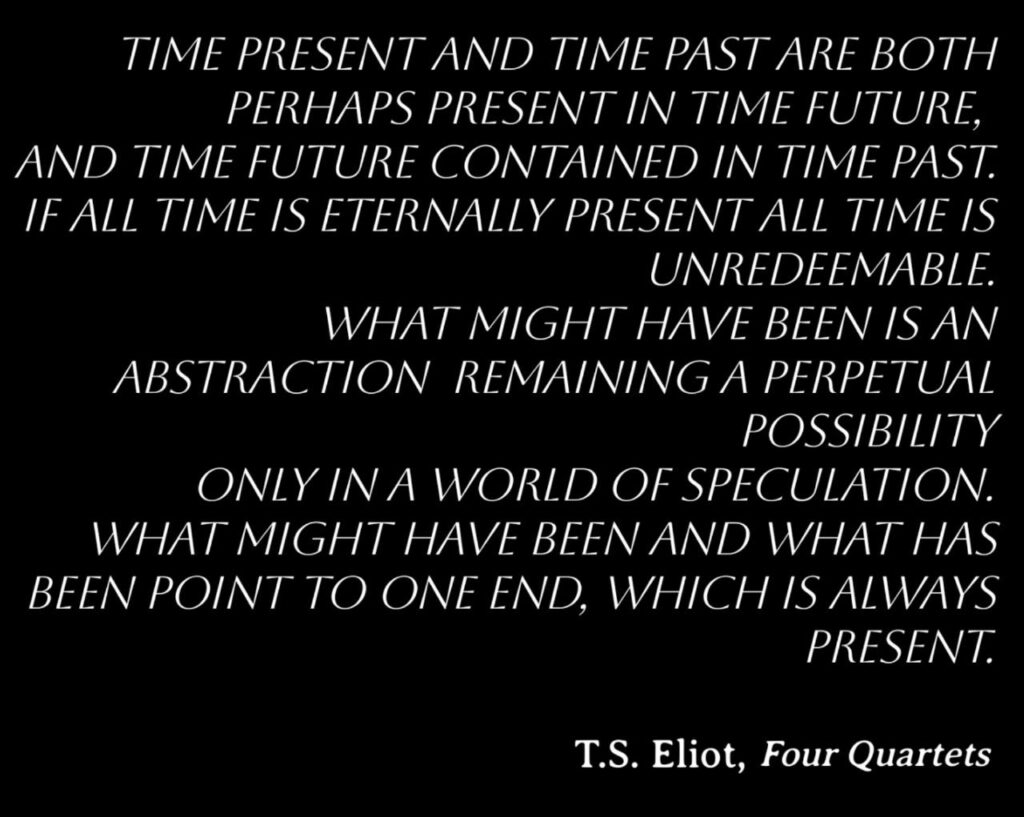
«The chances are that you are reading these words on a mobile device. There is a good chance that you are spending a lot of time on that device every day. If that is the case, you are not alone» 1. When I first read the incipit to Digital Tarkovsky, it was 2018. The rudimentary app I was using was designed to render the touch of paper: fibrous texture, slightly uneven margins, a faint rustle as I turned the page. I suddenly felt guilty, that petty guilt one feels at being found out, at recognising some of one’s traits within the impersonal description of a statistical survey. I was reading those words on a mobile device and on that same device I spent much of my time. Knowing whether or not I was alone at that point was in no way a comfort to me. When, five years later, I picked up Metahaven’s book again, reading the same words did not renew the sense of guilt. The fact that one reads from a mobile device, that one spends hours and hours of one’s time in front of that screen, is no longer a possibility, but a shared practice, sometimes silenced and not infrequently disguised. By the way, this practice is neither illuminating nor revealing regarding anything about our personality: it is simply a fact, a happening, a neutral event that is not, in the intentions of the writer, and should not be, in the impressions of the reader, connoted in any way. The most banal, or simply the least stimulating, approach to the subject-device-time relationship evoked by this brief incipit is the one that focuses on the first term. Since the early 2000s, the world of audio-visuals – especially movie, serial and television – has increasingly proposed products based on tired narratives in which a subject, gently sinking into the miasmas of a hyper-technolocialised world, disperses its identity between fluctuating 0s and 1s, ultimately losing itself in the blind search for a definitive reality. Different paradigms of the same narrative. But since we don’t believe too much in the concept of identity here – and we also have our doubts about what the Real is – we can try to take a step further and turn to the third term in question: time.
In the United States, during 2018, an adult spent an average of two hours and fifty-one minutes on their smartphone. In China, in the same year, the average daily time spent on a mobile device exceeded that spent watching television, rising to two hours and thirty-nine minutes. Tarkovsky’s Stalker was presented at the Moscow International Film Festival in August 1979: it lasted two hours and forty-one minutes – ten minutes less than American screen time, two minutes more than the Chinese one. Every day, regardless, a digital patchwork merging with reality entertains us in front of the screen for a totality of time equal (double in 2022) to a slow Russian film shot in the late 1970s. And yet the two perceptual experiences appear profoundly different: if, on the one hand, time seems to hide, absorbed and concealed by the superimposition of rhythms and stimuli, on the other it seems to somehow exhibit itself. Tarkovsky, perhaps more than any other, is the director who integrated a personal remodulation of the concept of time into his own artistic research. In Tarkovsky’s works, time is constituted as a character on stage, something immediately perceivable and persistent: in front of the two hundred frames of Mirror 2, in front of the saturation of Nostalghia 3, it is possible to tangibly experience the passing of time and detect its silent physicality. It is Tarkovsky himself who describes, in Sculpting in Time, his own conception of the temporal dimension:
Time is necessary to man, so that, made flesh, he may be able to realize himself as a personality. But I am not thinking of linear time, meaning the possibility of getting some- thing done, performing some action. The action is a result, and what I am considering is the cause which makes man incarnate in a moral sense. History is still not Time; nor is evolution. They are both consequences. Time is a state: the flame in which there lives the salamander of the human soul.4
In front of a Tarkovsky film, one experiences time in a singular way: the latter presents itself as a viscous flow that envelops every element; a perpetually staged solid object that shapes the materiality of events. What is constantly experienced is the fact that time cannot be domesticated, that things exist in time and therefore require it. But what kind of temporality is at stake here? Progressively since their appearance, our screens – those of mobile devices – have been associated with ever shorter attention spans. Thus, they have redetermined – or helped to redetermine – the way we spend our time, confining digitally unproductive activities to forgotten spaces in our lives. Bergson, in The Creative Evolution, in analysing the nature of time, describes a kind of underlying misunderstanding. It is usual, he says, to think of time as a measurable succession of concatenated instants, in a somewhat spatialised and chronological vision. At the same time, he continues, a temporal structure understood in this way would be ineffective if, for example, one wanted to derive movement from the single frame of a film and not from its unitary flow. For Bergson, similarly, time does not give isolated individual instants, but a continuous and indivisible flow that is determined by consciousness. In these pages of Creative Evolution, consciousness appears as a place where psychic states present themselves in an overlapping and a-hierarchical manner. Starting from these premises, the French philosopher distinguishes different temporalities: the time of science, measurable and divisible, is flanked by real time, that which each of us experiences through our consciousness:
If I want to mix a glass of sugar and water, I must, willy nilly, wait until the sugar melts. This little fact is big with meaning. For here the time I have to wait is not that mathematical time which would apply equally well to the entire history of the material world, even if that history were spread out instantaneously in space. It coincides with my impatience, that is to say, with a certain portion of my own duration, which I cannot protract or contract as I Eke. It is no longer something thought, it is something lived. It is no longer a relation, it is an absolute. What else can this mean than that the glass of water, the sugar, and the process of the sugar’s melting in the water are abstractions, and that the Whole within which they have been cut out by my senses and understanding progresses, it may be in the manner of a consciousness? 5
How do Bergson’s observations on time relate to Tarkovsky’s remodelling and the acceleration given by mobile devices? The ever stronger interpenetration between technological object and human subject has not changed the identity of the latter, but the latter’s sense of itself through time – and thus time itself: «messages, push notifications, and social media prompts become a new measure of our time. Our addiction to the mobile device’s platform services then enmeshes us in time intervals that run between our cravings for updates, shorter or longer latency periods when no updates happen, the moments of actual updates, and the velocities of all other events in our lives and environments»[6] 6: time is out of joint, some would say. Esther Weltevrede, Anne Helmond and Carolin Gerlitz, in a 2014 study, point out how the arrival of digital platforms has implied the segmentation of time into autonomous sub-temporalities capable of constituting their own now in constant movement: the creation of real time no longer takes place in the form of a still and eternal now, but allows new entities capable of determining topical and specific temporalities to emerge. It is through this dynamic that different and co-existing temporalities develop concurrently, capable of orienting and integrating what is defined as real time.
The main representations of time within the Western tradition leave no room for the emergence of multiple temporalities. The two great cornerstone theories can be represented through two different geometric characters: the circularity, of predominantly Greek origin, and linearity, typically Christian. On the one hand, Plato’s sphere and Aristotle’s circle, on the other Christ as «the point that establishes the double direction of historical time, the past as prefiguration and the future as universal judgement» 7. However, as Carlo Rovelli reports: «[There is] a different time for each point in space. There is not just one time. There are so many. The time indicated by a particular clock measured by a particular phenomenon is called proper time in physics. Every clock has its own time. Every phenomenon that happens has its own time»8. We could say, paraphrasing Timothy Morton, that Einsteinian space-time is the way matter deforms space from within, transforming the universe into something like a torrent studded with innumerable eddies of energy. It is in this way that space-time presents itself not as an empty container in which objects are placed, but as a force field generated from the objects themselves. Objects do not float in an infinite empty space: each entity persists in a own time. 9
As the sun crowns the outlines of the buildings with a milky halo, a plastic bag whirls in the wind. A young man with a busy pace, eyes fixed on his smartphone’s screen, crosses the street passing a car; inside the vehicle, a girl takes a photo of a detail that caught her attention. The car leaves; an anonymous crowd draws intricate geometries along the pavement. A restaurant customer photographs her cocktail, while the waiter frames the dog sitting with her. Few tables away, a couple, captures their lunch, as does the man at the next table who has just received his order. The plastic bag continues its blind flight. A young man does parkour filming himself with a selfie-stick. A little further on, close to a film set, the director’s booth opens up: inside, the director shows the camera the image of a dog. Screen within screen, an actor and his make-up artist scroll an app until the moment of the clapperboard. Action – the green-screen that served as a backdrop abandons its fluorescent form to transform into a group of crumbling buildings; a shower of CGI debris guides the protagonist’s movements through a ruined city. The same scene is replayed from a television set in the confusion of a living room. A woman, seated precariously on the sofa, clutches a cup of tea with one hand, while using her smartphone with the other. In front of her, two dogs fight over a toy, while two children contend over a laptop on whose screen the same film is buffering. An older woman moves around the room, eating a slice of pizza, also struggling with her smartphone. In the kitchen, a man tries to watch a video by balancing his device on an improvised aluminum framework. The doorbell rings, the man opens the door, two young girls enter the house: no one takes their eyes off their smartphone, while a riot of notifications, sounds and alarms accompanies the man out into the street, where our screen is haunted by the uncontrolled proliferation of notification screens from every passer-by. Black screen. A light, at first timid, begins to twinkle. A voice suggests, “Isn’t it wonderful?”
If you have been to a movie theatre lately, especially if inside a multiplex, you most possibly experienced how articulate narratives of this kind are aimed at conveying a very simple message: turn off your phone. The dualism between small and big screen, far from being a purely aesthetic-technological issue, represents the contest between two distinct and overlapping temporalities. Although «Cinema [has] already ostentatiously won the race for the biggest screen», it is nevertheless deemed necessary to establish a regulation aimed at preventing the distraction caused by other devices of duration. Beyond pragmatic motivations, at a deeper level, it seems that cinema needs to re-appropriate space, especially when it has lost «its monopoly over the dominating inner-time that the screen acts as a conduit for»10. Deleuze, in the first pages of his writings on cinema, identifies precisely in Bergson’s theses on movement the tools to elaborate his own theory of the image. In Deleuze’s thought, cinema does not give an image of time in the strict sense; what cinema gives back is an time-image to which time immediately belongs. As Menil reports in L’ecran du temps:
The specificity of the time-image is that it contains time in such a way that it emerges on its own, without the help of adventitious events, which it have to take care of as an afterthought and safeguard at the same time. (…) Time itself changes course and rhythm, it seems to diverge from itself, and not being reducible to the signs produced by the objective and homogeneous data that actually structure the procession of images and their perception. It occupies more than one plane and offers itself on several dimensions, going in all directions and leaving none intact. 11
It is a time that, having become image , needs to become aberrant in order to abandon its invisibility. Where the movement-image provides an indirect image of time constructed by editing, the time-image is not given by the interruption of movement, but by the transformation of that same fluid and homogeneous movement into an aberrant false movement. It is this type of movement that directly reveals time: not the measurable one – that of science, à la Bergson – but time as totality and infinite openness. If, following Metahaven, we accept to consider the digital universe staged by devices and micro-devices as an «undeclared form of cinema»12, what does it entail to live immersed in a multiplicity of time-images that simultaneously shape the temporal dimension? Although there is no story, but «a sequence of visual material that we are inclined to construct a story-like temporal unity out of» [13], the more people we follow, the greater the number of stories that make up our filmic mosaic. This timeline – that in which subjectivities are configured as active-passive nodes – is consumed by the viewer as a homogeneous stream consisting of the presentations of events at which, at least in most cases, he or she was physically absent. The viewing of and thus the participation in this flow of images is, as Metahaven points out, something completely different from the viewing of TV news, where images and words cross the screen in a unidirectional interaction based on the absence of a direct social link. What appears unprecedented within this dynamic is a subterranean and tacit invitation to participation: the film staged by the virtual patchwork, the image that constitutes it, calls us to take part in it.
In 2018, Instagram has been called the worst social network for mental health. The development of coexisting and irreconcilable temporalities, the frenetic rhythms given by the overabundance of stimuli, the endless scrolling, the personalised feed, «autoplay, the chronological inversion of the timeline, push notifications»13, are elements that compromise the constitution of a stable emotional dimension: «viewing the event through the app, from a distance, may highlight, to the user, their own physical distance from the scene, and thus that their life may be felt as lacking in some of the things that the depicted lives of others so ostentatiously possess – fun, happiness, beauty, intensity»14. The ways in which platforms hierarchize their content seem, at the same time, to systematically favour aberration over the generic and the everyday, forcing shades of intensity into the place of a “boring normality”. Platforms such as Instagram, in this sense, act as filters sifting, through a double process of segmentation and stratification, the realm of the visible. What is constituted is a politics of the visible without foundations, transitory by its very nature; a continuous making and unmaking driven by ill-trained algorithms. The content and plot of this type of cinema, for Metahaven, is configured as
The self- representation and self-production of a social fabric under the pressure of platform design. We can, and perhaps should, imagine different, cooperative platforms, which reflect conditions that users want for themselves. But for the moment, cinema for the interface is continuously co-produced and conditioned by the larger capitalist structures in and through which it subsists. This doesn’t result in pure art, but in massively scalable contradictions, with increasingly uninterrupted user engagement.15
The hiatus, the residual space, between the speed of the platform and that of the lived experience «under the atmospheric omnipresence of all-encompassing computational force» turns out to be essentially a propaganda space. The multiplication of highly personalised media content acts by instilling a form of ideological distortion, which is ultimately implicit to the very condition of the user. The subject, having lost the certainty of his own time, split between the familiarity of a self-imposed feed and the strangeness of distant lives, is confronted with a kind of digital perturbation: the stranger familiarised through a follow, and the familiar alienated through dilution become part of a single monstrous flux, constituted by accelerated temporalities that characterise their appearance.
If, starting with Bergson and Rovelli, we open up to the possibility of multiple coexisting real temporalities, and if, with Metahaven, we affirm that different temporalities correspond to different devices, then the internal investigation of the subject-device-time relationship leads us from time towards the device. According to Tarkovsky, cinema, and art in general, “is a metalanguage through which men attempt to communicate with one another: to share information about themselves and to make the experience of others their own»16. In this way, the film medium acquires a purely self-narrative purpose: it becomes an instrument for telling one’s story, for carrying out a self-narrative aimed at mutual understanding. By playing through Metahaven’s rules – considering digital patchwork as an undeclared form of cinema – one could narrow the field of inquiry to the relationship between device and self-narrative.
I open TikTok. With the complicity of the room’s darkness, the white glow of the screen casts my shadow on the wall, leaving me momentarily astonished. In a few moments, I am swept into a vortex of narratives: at first they seem unconnected, simply juxtaposed, idly assembled by an exhausted hand. As they flow by, I begin to perceive their choral dimension, tesserae of an unknown mosaic. I catch a glimpse of a drawing but cannot picture it in its entirety. I wonder what the images that make up the strange dance staged before my eyes have in common: they are different shapes, colours and sounds, yet connected by a mysterious internal coherence. I open Instagram. This time my eyes, already accustomed to the over-saturation of each colour, do not detect any noticeable variations. Although the images are static this time, the same feeling of internal cohesion survives from one platform to the other. I realise that I may not have been able to grasp the fresco in its entirety because the mixture of river sand, marble dust, lime and water did not just cover the interior walls: the entrance hall, the central doorway, the lobby, the courtyard in front, and then the streets, the other buildings, the whole city are covered in the same colours. The digital flow formed by the images seems to act by presentification: bringing something absent back to consciousness. I hypothesise then that what connects these elements is the act of telling: but telling what? The binary vortex generated by the flow of images uproots everything, dragging it into itself; the potentially infinite multiplicity of simple happenings that animate the world is reconfigured under the hegemony of the narrator. I answer myself then that the only element to recur, be it behind or in front of the camera, is none other than a self. What does it mean to narrate a self, then? Does the act of narration presuppose an original core that is subsequently represented? Or is it the narrating itself that simultaneously constitutes that core? I tell myself that what unites the images that make up the kaleidoscope in which my room now swirls is nothing more than the fragment of a process of identity constitution that is always in progress; that narrating oneself is a game of mirrors – observing the world reflected in other eyes, turned towards us.
Although it is complex to pinpoint the exact origin of this form of narration, the term autofiction was introduced by Serge Doubrovsky in 1977 in reference to his novel Fils. Distancing himself from the notion of autobiography, for Doubrovsky autofiction takes on the characteristics of a «fiction, of events and facts that are strictly real […] Encounters, threads of words, alliterations, assonances, dissonances, writings placed before or after literature, concrete, as we say of music»17. Commonly, autofiction refers to a form of writing derived from the eighteenth-century autobiographical novel, which, during the twentieth century, became the spokesperson for the impossibility of narrating the subject in its unity. The autofictional work is defined first of all from a referential point of view, with regard to its content and its relationship to reality, interpreted from the author’s point of view. The recounting that underlies the foundation of autofiction is constituted by the interweaving of reality and unreality, of «authenticity and mystification, sincerity and forgetfulness»18; it is through the mirror of the self, filtered through the prism of fiction, that the subject reconstitutes himself from his own narration. As Doubrouvsky reports, the novelty that essentially characterises autofiction is the radical alteration of romantic solitude. The protagonist of the narrative is not formed through a self-portrait, but through a «hetero-portrait, which returns to him from the place of the Other»19. Since the germ of falsification lies embedded in the foundations of representation, in narrating oneself, the subject must perpetually step outside of himself in order to actualise himself through the Other; in this way, the device – be it cinematic, literary, discursive or aesthetic – is configured as the place of falsification.
Let us briefly borrow two terms from the neo-materialist debate and relate them to our discourse: representationalism and performativity. By the former we mean a theory of identity that admits the existence of an original core that, through self-narration, has a way of being communicated20, while by the latter we indicate the constitution of the identity apparatus through the act of its enunciation21; on the one hand the narration of something, on the other the making of that something immanent to the act of narration. Where representationalism would allow narration to be traced back to the form of autobiography, the performative perspective configures self-narration as an advanced form of auto-fiction: if the device is constitutively the place of the enunciation of the self, then autofiction takes on the character of «a narration in which, as in an autobiography, author, narrator and protagonist coincide; but in which, as in a novel, the protagonist performs acts that the author has never performed, and facts recognised as empirically occurring are mixed with events recognisable as not occurring» 22. The process of self-narrative is in this sense constituted as a process of self-construction. The medium through which the discursive flows of subjectification converge and are filtered becomes part of a more extended process of subjectification involving time, subject and device. If, as we have seen, specific devices generate specific temporalities, and, at the same time, different temporalities correspond to different ways of subjectifying oneself, then each device, through its own rhythm, will constitute a different kind of subject: a subject with its centre of gravity leaning towards interaction, peripheral and decentralised.23We initially told ourselves that within the triadic relationship “subject-dispositive-time” we would only dwell on the last of the three terms involved. Instead, we ended up talking about the subject. Perhaps, however, to vigorously draw boundary lines where these are only sketched – blurred, intersecting, overlapping – is an act of theoretical violence that seems to us to belong only to those who know things all too well, or to those who in the end do not know them at all. Our point of observation is internal, what we see is partial, the time we live is schizophrenic: where one term ends and the other begins is a purely discursive question and has nothing to do with our experience. We are entities immersed in time, and as such we must narrate ourselves.
- Metahaven, Digital Tarkovsky, Strelka, 2018.
- “In Mirror, time itself was articulated in the frame. In this film there are about two hundred frames in total. This is very few when you consider that in a film of this length there are usually five hundred to a thousand. The small number of shots is determined by their length. The welding of the shots together organises the structure, but does not, as is usually believed, create the rhythm of the film. Instead, the rhythm of the film arises from the character of the time that flows within the frame. […] the rhythm of the film is determined not by the length of the edited pieces, but by the degree of tension of the time that flows within them’. (A. Tarkovsky, Sculpting in Time, National Tarkovsky Institute, 2015) [trans. from Italian]
- “Could I ever have supposed by shooting Nostalghia in Italy that the state of suffocating, dead-end melancholy that fills the entire screen space in this film would become the fate of my later life?” (A. Tarkovsky, Sculpting in Time, National Tarkovsky Institute, 2015)
- A. Tarkovsky, Sculpting in Time, Tarkovsky National Institute, 2015.
- H. Bergson, Creative Evolution, Rizzoli, 2012. [trans. from Italian]
- Metahaven, Digital Tarkovsky, Strelka, 2018.
- https://operavivamagazine.org/temporalita-plurali/
- C. Rovelli, L’ordine del tempo, Adelphi, 2017. [trans. from Italian]
- T. Morton, Hyperobjects, University of Minnesota Press, 2013.
- Metahaven, Digital Tarkovsky, Strelka, 2018.
- A. Menil, L’ecran du temps, Presses Universitaires de Lyon, 1991.
- «Since we set out to look at mobile devices and their temporality as an undeclared form of cinema, the notion of pacing presents some important starting points for thinking about platform temporality. Platforms direct narrative arches and cliffhangers, shaping themselves around a user’s needs and attention…] So, while the pacing of updates and prompts on various platforms and devices may be interpreted as an undeclared form of cinematic editing, the fact that we live more and more, but still not all of our lives on Facebook means that there remains a rarely accounted for difference or gap between life and platform». (Metahaven, Digital Tarkovsky, Strelka, 2018)
- Ibid.
- Ibid.
- Ibid.
- The Russian filmmaker excludes the possibility of self-expression untethered from a perspective of exchange: ‘is it worth the effort to hear one’s own echo? – question. (A. Tarkovsky, Sculpting in Time, National Tarkovsky Institute, 2015)
- S. Doubrovsky, Fils, Gallimard, 2001.
- R. Fontanel, De l’autobiographie à l’autofiction cinématographiques: l’art du double je(u), Textimage, 2019
- Ibid.
- Both liberal social theories and theories of scientific knowledge owe a great deal to the idea that the world is made up of individuals – presumed to pre-exist laws or their discovery – just waiting to be represented and inviting representation. The idea that living beings exist as individuals with intrinsic attributes that predate representation constitutes a metaphysical presupposition that underlies the adherence to representationalism in the political, linguistic and epistemological fields […] Representationalism is the belief that there is an ontological distinction between representations and what they purport to represent, in particular, the object of representation is held to be independent of any representational practice. (K. Barad, Performatività della natura, ETS, 2017) [trans. from Italian]
- “A well-designed and represented scene induces the audience to attribute a self to a represented character, but what is attributed – the self – is the product of the scene being represented and not a cause of it”. (E. Goffman, La vita quotidiana come rappresentazione, Il Mulino, 1959) [trans. from Italian]
- R. Donnarumma, Ipermodernità. Ipotesi per un congedo dal postmoderno, Allegoria, 2011.
- The fact that we have often referred to the temporality generated by the device was, in the course of the text, a linguistic shortcut: we do not believe that devices are capable of generating, in the strict sense, another temporality, but that they merely embody it.

